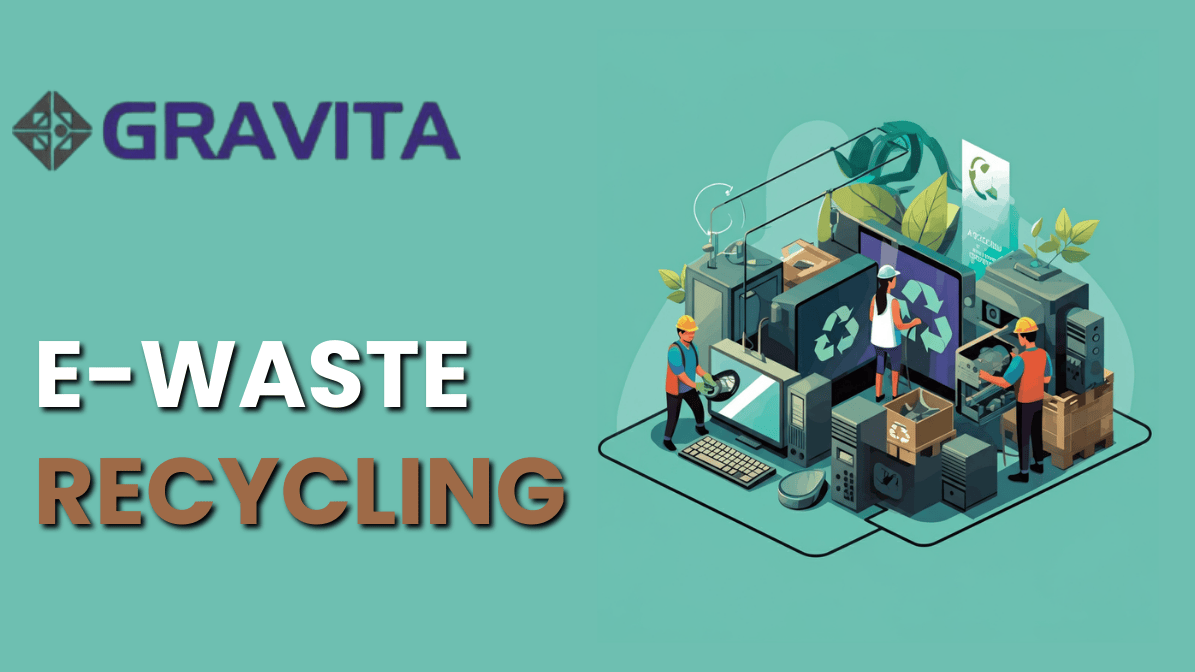
What is E-Waste? How It Works and Why It's Essential
E-waste, or electronic waste, refers to discarded electrical and electronic devices like old smartphones, televisions, computers, and appliances. As technology advances rapidly, more electronic devices are being replaced or thrown away, contributing to a significant environmental problem. Recycling e-waste is essential for managing waste effectively, conserving valuable resources, and protecting our planet.
How E-Waste Recycling Works
1. Collection of E-Waste
The first step in the recycling process is collecting the e-waste from various sources, including homes, businesses, and public collection centers. It’s important to ensure that these devices are not disposed of in landfills, as they contain harmful materials like heavy metals and plastics.
2. Sorting and Separation
After collection, the e-waste is sorted into different categories such as plastics, metals, and circuit boards. This sorting process helps determine the most efficient way to recycle each material, ensuring that each component is handled properly.
3. Disassembly
In this stage, workers carefully dismantle the electronic devices. This is a critical step because it separates valuable parts, like circuit boards and batteries, from non-recyclable materials. Components such as screens, wires, and plastics are also separated.
4. Shredding and Size Reduction
After disassembly, the remaining parts of the e-waste are shredded into smaller pieces. This process helps make it easier to extract valuable materials such as precious metals and to separate hazardous components.
5. Extraction of Valuable Materials
E-waste contains valuable metals such as gold, silver, copper, and palladium. These metals are extracted from the shredded materials using mechanical, chemical, or thermal processes. The recovered metals can then be reused in the production of new electronic devices, reducing the need for mining raw materials.
6. Safe Disposal of Hazardous Materials
E-waste often contains hazardous materials such as mercury, lead, cadmium, and brominated flame retardants. These toxic substances must be handled with care to prevent harm to the environment and human health. During recycling, special procedures are followed to neutralize or safely dispose of these substances.
7. Recycling and Reuse of Plastics and Glass
Materials like plastics, glass, and rubber are separated and recycled for reuse in new products. For example, plastics can be transformed into new components for the electronics industry, while glass can be recycled into new screen materials.
8. Final Product Manufacturing
Once the materials are sorted, cleaned, and processed, they are used to manufacture new products. The recycling of e-waste reduces the demand for raw materials, saving energy and resources. Many consumer goods, from new electronics to household items, can be made from recycled materials.
Why E-Waste Recycling Is Essential
1. Reducing Environmental Impact
When e-waste is improperly disposed of, it ends up in landfills, where harmful chemicals can leach into the soil and water supply. Recycling e-waste prevents these toxic materials from polluting the environment. It also reduces the carbon footprint associated with manufacturing new electronic products.
2. Conserving Valuable Resources
E-waste is a rich source of valuable materials such as metals and plastics. Instead of extracting new raw materials through mining—which is resource-intensive and environmentally damaging—recycling allows us to reuse these materials, reducing the environmental impact of resource extraction.
3. Preventing Toxic Waste
E-waste contains hazardous substances like mercury, lead, and cadmium, which can pose serious health risks to humans and wildlife. Proper recycling processes ensure these toxins are safely removed and do not contaminate the environment.
4. Energy Savings
Recycling e-waste consumes less energy compared to producing new electronic products. By reusing materials, energy consumption is significantly reduced, leading to a more sustainable production process.
5. Economic Benefits
E-waste recycling not only saves natural resources but also creates jobs. From collection and sorting to the extraction of valuable metals, the e-waste recycling industry plays an essential role in the economy.
The Growing Problem of E-Waste
The rapid pace of technological advancement means that electronic devices have shorter lifespans, contributing to the growing problem of e-waste. According to the United Nations, over 50 million metric tons of e-waste are generated globally each year. This number is expected to continue rising as more people adopt smart devices, appliances, and other electronics.
Unfortunately, only a small fraction of e-waste is properly recycled, with much of it ending up in landfills or being exported to developing countries where it is often processed in unsafe conditions. This highlights the need for better recycling infrastructure and global efforts to address the e-waste crisis.
How You Can Contribute to E-Waste Recycling
- Dispose of E-Waste Responsibly: Always take your old electronics to certified recycling centers, which are equipped to handle e-waste safely.
- Recycling Programs: Participate in recycling programs run by manufacturers and retailers, where you can trade in or recycle old electronics.
- Reduce and Reuse: By prolonging the life of your electronics through proper maintenance and repair, you can reduce the amount of e-waste generated.



